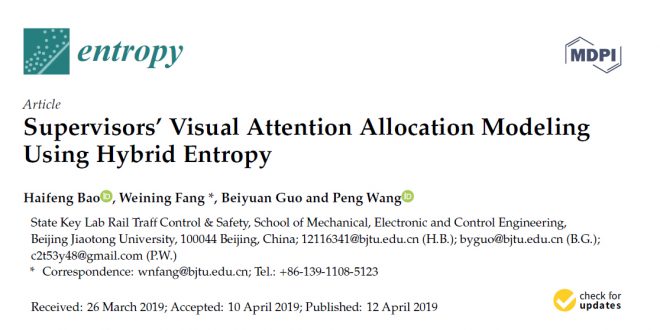With the improvement in automation technology, humans have now become supervisors of the complicated control systems that monitor the informative human–machine interface. Analyzing the visual attention allocation behaviors of supervisors is essential for the design and evaluation of the interface. Supervisors tend to pay attention to visual sections with information with more fuzziness, which makes themselves have a higher mental entropy. Supervisors tend to focus on the important information in the interface. In this paper, the fuzziness tendency is described by the probability of correct evaluation of the visual sections using hybrid entropy. The importance tendency is defined by the proposed value priority function. The function is based on the definition of the amount of information using the membership degrees of the importance. By combining these two cognitive tendencies, the informative top-down visual attention allocation mechanism was revealed, and the supervisors’ visual attention allocation model was built. The Building Automatic System (BAS) was used to monitor the environmental equipment in a subway, which is a typical informative human–machine interface. An experiment using the BAS simulator was conducted to verify the model. The results showed that the supervisor’s attention behavior was in good agreement with the proposed model. The effectiveness and comparison with the current models were also discussed. The proposed attention allocation model is effective and reasonable, which is promising for use in behavior analysis, cognitive optimization, and industrial design.
This research was funded by the National Natural Science Foundation of China (grant number 51575037) and the Research Foundation of State Key Laboratory of Rail Traffic Control and Safety (grant number RCS2018ZT009).
References:Haifeng Bao , Weining Fang *, Beiyuan Guo and Peng Wang ,Supervisors’ Visual Attention Allocation Modeling Using Hybrid Entropy,Entropy 2019, 21, 393; doi:10.3390/e21040393.
 复杂系统人因与工效学研究所
复杂系统人因与工效学研究所

